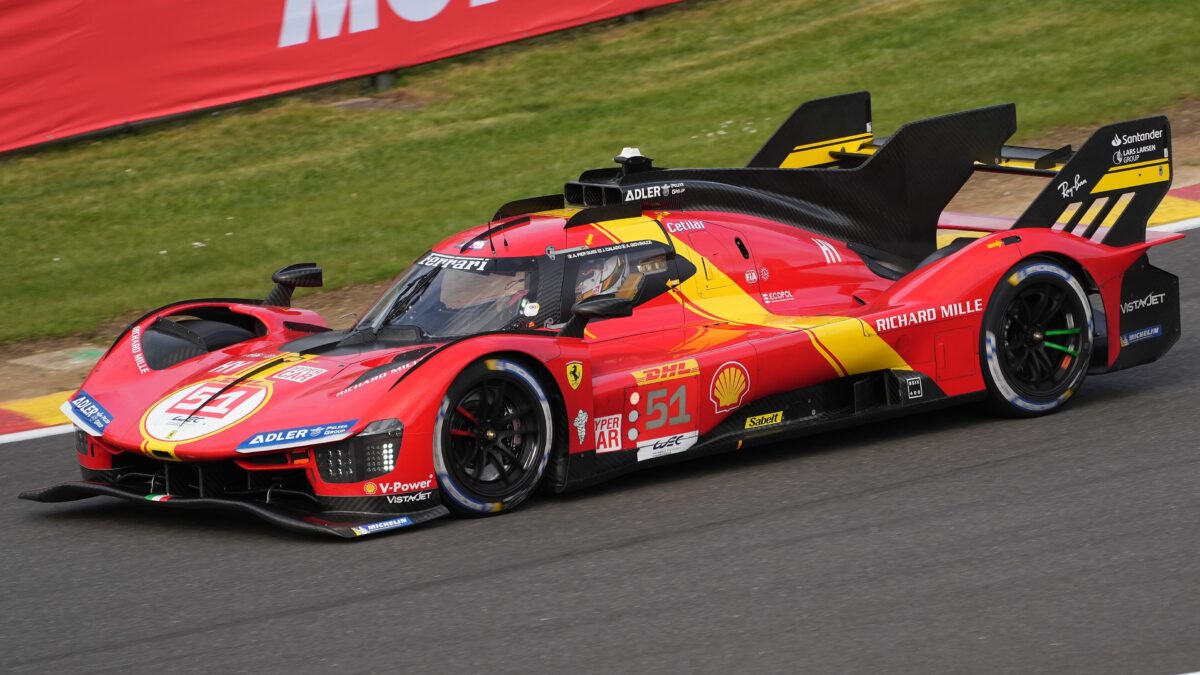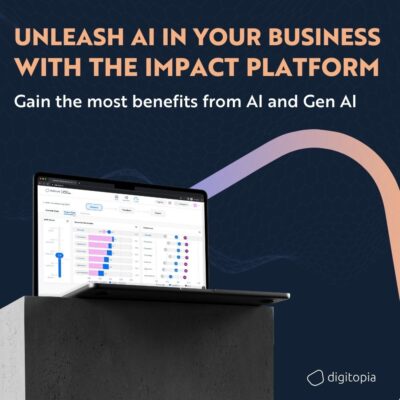
Ferrari is an outlier in the best sense of the word. Roughly 14,000 cars delivered last year—yet revenue above €6.6 billion and operating margins that most automakers can only dream about. A market capitalization that routinely sits ahead of far larger mass-market peers like Mercedes-Benz Group and Volkswagen. And while the road-car business prints enviable returns, the racing team continues to modernize under Team Principal Frédéric Vasseur (since January 2023), with CEO Benedetto Vigna—an ex-semiconductor executive—steering the company’s broader digital and electrification strategy.
This is not luck. It’s leadership, strategy, diligent execution, a committed team—and a flywheel that spins data, software, and AI both ways between Maranello’s road cars and Scuderia Ferrari’s race cars.
Below is a practical, executive-level take on how Ferrari makes that flywheel work—and what leaders can borrow for their own transformations.
1) Leadership that treats software as a performance part
When Ferrari appointed Benedetto Vigna from STMicroelectronics as CEO, it signaled that chips, code, and algorithms would be as central as carbon-fiber and ceramics. Under Vigna, Ferrari has leaned into model-based development and “hardware-in-the-loop” testing to accelerate and de-risk electronics and software for new vehicles—techniques long used in consumer electronics but now repurposed to shorten automotive debug cycles.
On the racing side, Vasseur’s mandate has been clarity and speed—organizationally and digitally. He took the helm in 2023 and, amid other changes, even covered the Technical Director (Chassis) remit on an interim basis in 2024—tightening decision loops between leadership and engineering. That tone-from-the-top matters: it tells the factory and the pit wall that data and decisions move as one.
Executive takeaway: Appoint leaders who are confident in software economics and data-driven operations, not just mechanical craft. Make organizational clarity part of the performance system.
2) A clear strategy that couples scarcity with personalization—and funds the roadmap
Ferrari’s strategy has always been disciplined scarcity, but the modern twist is digital personalization at scale. Revenues and margin expansion in 2024 were driven by a richer mix and increased personalizations—the kind of high-margin “bits on top of atoms” that digital enables. The configurator and MyFerrari ecosystem bring that to life, giving clients and dealers precise control and visibility while feeding the factory with structured data.
Generative AI now amplifies that engine. Ferrari reports using gen-AI on AWS to speed simulations, build internal knowledge bases, and create hyper-personalized configuration suggestions—turning customer intent and historical choices into curated recommendations within seconds.
Executive takeaway: Tie your pricing power to digital. When strategy prizes mix and personalization, your AI roadmap becomes a profit roadmap—not just a tech project.

3) Diligent, decisive execution: from pit stop AI to virtual sensors
Ferrari’s partnership with AWS is a textbook example of pragmatic AI: choose measurable use cases, deliver them, then scale.
Pit stop analytics with ML. Manually synchronizing multiple camera feeds with telemetry is slow and error-prone. Ferrari built an ML-powered pipeline to align video and data, cutting sync time by up to 80% and enabling faster root-cause analysis of tiny execution losses. First prototyped late 2023, it moved to production by April 2024.
Virtual ground-speed sensor. Real ground-speed sensors are expensive, heavy, and failure-prone. Ferrari trained AI models to replace the physical sensor, providing reliable signals to race engineers while saving weight and budget—small deltas that matter over a season.
Power-unit assembly analytics. Ferrari centralized manufacturing data for the F1 power unit in a cloud data lake and used ML to detect anomalies and optimize assembly steps—classic “quality at source,” now software-defined.(Amazon Web Services, Inc.)
These are not science projects; they are targeted interventions that move lap time, reliability, and learning cycles. And critically, the same tools and methods loop back into the road-car side—accelerating simulation, knowledge retrieval, and configuration logic.
Executive takeaway: Start with specific bottlenecks (time-to-insight, sensor cost/weight, assembly quality). Deliver a working solution with a partner. Then reuse the platform and patterns across the enterprise.
4) A committed, capable team—augmented, not replaced, by AI
Ferrari’s own engineers emphasize that machine learning assists expert judgment rather than substituting for it. That ethos matters for adoption: AI flags anomalies; humans decide what to do. It also shapes hiring and upskilling—data engineers and race/performance engineers sit closer together, and cloud fluency becomes a competitive advantage.
On the road-car side, designers, digital product managers, and sales advisors collaborate through the same data backbone. The result: fewer hand-offs, more context, and personalization that feels bespoke rather than programmatic.
Executive takeaway: Treat AI as a force-multiplier for expert teams. Invest in workflow integration and training so the “assist” is natural, fast, and trusted.
5) Celebrate the wins—because they finance the next lap
Ferrari’s financial discipline is part of the operating system. 2024 net revenues rose to €6.677 billion with 13,752 shipments; mix, personalizations, and lifestyle/brand revenues all contributed, and operating profit rose 17%. Market valuation rewards that discipline: despite lower absolute volumes, Ferrari’s market cap often sits above Mercedes-Benz and Volkswagen—proof that investors buy durable economics, not just units.
Executive takeaway: Celebrate progress and reinvest deliberately. Public signals (product cadence, digital milestones, even leadership extensions) reinforce internal momentum and external confidence.
The road ahead: 2026 rules, EVs, and the “e-building”
Transformation has no checkered flag. On track, the 2026 Formula 1 regulations will reset aerodynamics and power-units, demanding new models, new simulations, and new strategies—a perfect stress-test for Ferrari’s data and AI flywheel. Off track, Ferrari has inaugurated its “e-building” in Maranello to hand-craft electric axles, batteries, and next-gen vehicles alongside ICE and hybrids, giving it flexibility by design.
Ferrari plans the first fully electric model in the near term (the company has discussed unveiling timelines and capital-markets targets), while rebalancing its longer-term electrification mix to match evolving demand. What matters for executives isn’t the exact percentage split next year; it’s the capability build—verticalizing critical e-components, embedding model-based development, and using AI to shorten cycles from idea to road.
Executive takeaway: Build plants, platforms, and partnerships that keep options open. In volatile tech cycles, optionality is strategy.

What your company can borrow from Ferrari—today
Whether you run a manufacturer, a services firm, or a diversified conglomerate, the Ferrari playbook travels well. Here’s how to apply it—grounded in what we see across Digitopia customers and our maturity benchmarks:
1. Make leadership digitally bilingual.
Promote or hire at least one executive (not just the CIO) who thinks in software and systems and can sponsor cross-functional AI programs with clear business P&L outcomes. Ferrari did this at the very top.
2. Aim your AI at unit economics.
Ferrari’s gen-AI and data work improve price/mix, reduce hardware cost/weight, and lift assembly yield. Pick three equivalent levers in your business (e.g., personalization margin, premium service attach, scrap/rework reduction) and build the AI backlog from there.
3. Exploit the two-way flywheel.
Ferrari pushes learnings from the track to the road, and back again—from virtual sensors to simulation pipelines. Create your own flywheel: pilot in the “fast loop” (a frontline, plant, or digital channel), then productize for the enterprise where it can compound.
4. Instrument execution, not just outcomes.
The pit-stop project succeeded because Ferrari measured the process (sync time, detection accuracy), not only race results. Do the same: measure cycle-time, hand-offs, and data freshness in your critical workflows.
5. Codify capability, not just projects.
Cloud data lakes, MLOps, and model-based development are reusable assets. Fund them as platform line items with adoption targets across business units—exactly how Ferrari repurposes AI patterns across racing and road cars.
Where Digitopia fits: measure, benchmark, execute
Ferrari’s story underlines a truth we see every day: what’s measured gets done—faster. If you want Ferrari-like focus and compounding gains, you need objective maturity visibility and a disciplined execution drumbeat:
- Digital & AI Maturity Assessments: We baseline your Strategy, Value, Data, Technology, Capabilities, and Governance—pinpointing where to invest next and how to sequence the roadmap for impact.
- Benchmarking: We compare you with peers and leaders, translating lofty ambition into practical next steps.
- Roadmap to Runway: We translate maturity gaps into a funded, sequenced roadmap—then track adoption, value, and risk like a race engineer watches telemetry.
Our clients use these assessments and benchmarks to defend budgets, align executives, and maintain momentum quarter after quarter. The result: fewer detours, more laps that count.
A closing note on culture: transformation is a team sport, a journey, and a corporate matter
Ferrari’s success is a cultural case study as much as a technical one.
- Team sport. In Maranello, designers, software engineers, aerodynamicists, and pit crews win together. The org chart reflects that interdependence.
- Journey. Those 2024 results weren’t an accident; they’re the compounding effect of years of capability build—now accelerating with the e-building and gen-AI.
- Corporate matter. Strategy, budgets, stress, and success are intertwined—from Vigna’s capital allocation and talent choices to Vasseur’s race-weekend calls. Leadership coherence is the real competitive advantage.
Ready to build your own flywheel?
Ferrari shows that you can be both a high-margin business and a relentless learning machine. The trick is to let data, software, and AI circulate value across your enterprise the way Maranello circulates it between factory and pit lane.
If you want a structured way to start—or to pressure-test your current path—Digitopia’s maturity assessments, benchmarks, and roadmap discipline can be your green light. Measure where you are. Prioritize the next overtakes. Execute diligently. Celebrate wins. Repeat.
Because in transformation, as in racing, there’s always another lap.
Sources
— Ferrari FY 2024 results press release (revenues, shipments, margin drivers).
— CompaniesMarketCap automaker rankings (market cap positions vs. peers). (Companies Market Cap)
— AWS + Ferrari case studies: generative AI for personalization & production; ground-speed virtual sensor; pit-stop ML; power-unit assembly analytics. (Amazon Web Services, Inc.)
— Ferrari leadership roles & updates (Vasseur Team Principal; interim chassis remit). (Formula 1® – The Official F1® Website)
— Maranello “e-building” inauguration and 2026-readiness context. (Ferrari)



